Nowadays, more and more farmers prefer flow-through worm bins which are designed to overcome the most disadvantages you noticed at your traditional worm bin. Even though you have already started with traditional worm composter, you can move on to a flow-through system when you discover all the advantages of this way of composting.
The advantage of a flow-through worm bin is a continuous making of finished compost in a very short time and without any hard working. At the same time, you will not disturb the worms during the process. Such a design makes harvesting more comfortable and convenient. Let me show why so many people are increasingly choosing this type of composting these days.
Why Choosing Flow-Through Worm Bin
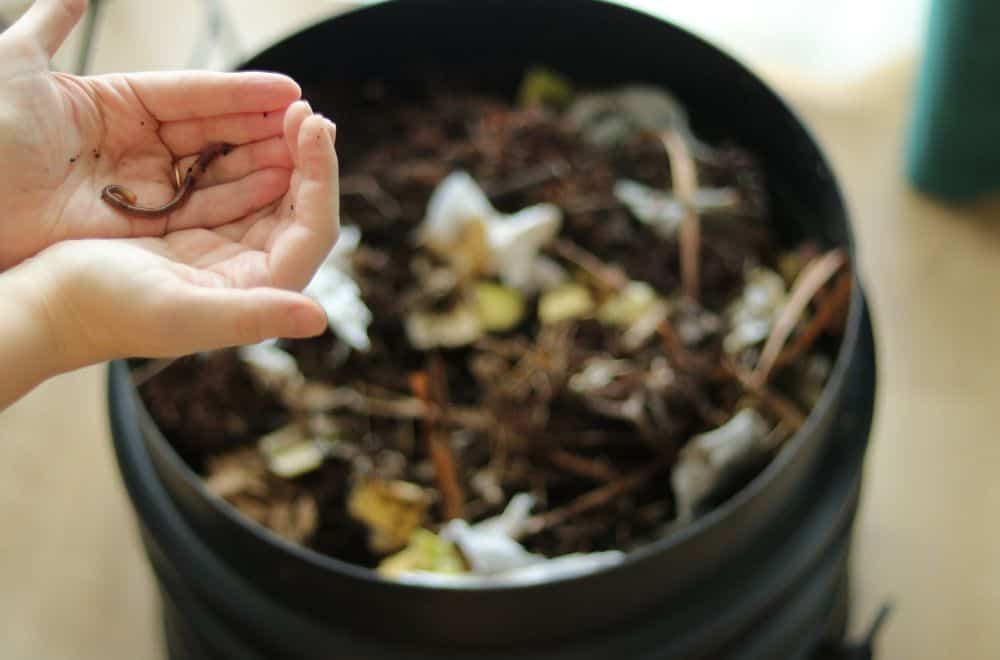
The problem with traditional worm bins is the same as with compost tumblers. By using them, you always end up with bedding and a waterlogged muck of castings at the bottom of your device. That means that harvesting represents some kind of cleaning up a mess.
On the other hand, the flow-through system is clean, convenient, and easy to maintain. Since it is highly effective, many commercial, contemporary worm farms use them frequently.
Basically, this system uses the natural instincts of composting worms to live in the topsoil and decomposing matter. You need to add food to the top of your worm composter where the most of worms live, and then harvest compost from the openings in the bottom of your unit.
The excellent thing is that you can find high-quality flow-through bins on the market, but you can also make one by yourself by using a few plastic containers. Every container, including garbage cans, large buckets, wooden boxes, or old water heaters, for example, can be used for this purpose.
What the Flow-Through Vermicomposting System is
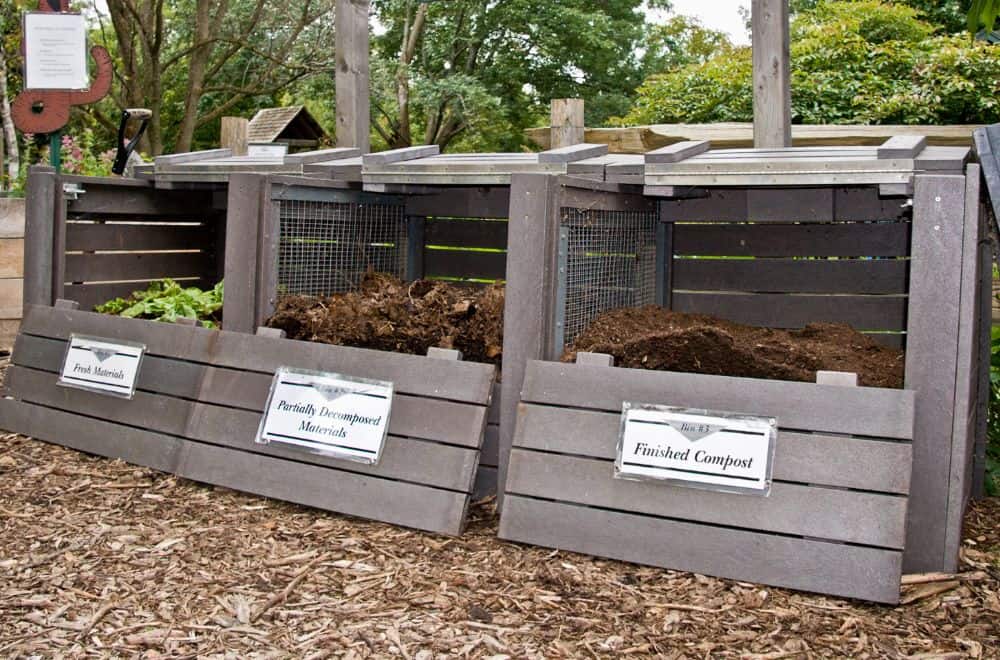
However, even though the standard worm composters are the most common systems you can find, mostly because they are the cheapest, these bins have a few limitations. The most important one is the process of separation your vermicompost from the worms. It can be a quite unpleasant experience, right?
Flow-through vermicomposting (continuous flow-through – CFT) system is actually a regular compost bin which is both large enough for you to compose a large amount of waste and optimized explicitly for efficient composting your waste. At the same time, this bin will reduce your efforts to harvest the compost.
In general, it is like a regular bin, but you can fill it from the top without moving a heavy tray. When the time comes, you should harvest the vermicompost from the unit’s false bottom. That way, you will not interrupt the worms, and they can work all the time continuously.
What the History Says
The history says that scientists at the Rothamsted Experimental Research Station (UK) designed the first ‘official’ flow-through system in the early ’80s. They made a system of 8 x 128 inches (20 x 325 cm) and a surface area of 1024 sq ft (95 m2).
After building the bed, they added approximately 1 inch (2.5 cm) of food materials on the surface per day. Once the initial period was completed, they started to remove vermicompost daily from the grate placed at the bottom of the system.
Surprisingly, the system worked exceptionally well and became a fantastic way of creating and separating high-quality vermicompost without too many efforts. For a short time, some large farms, including Sonoma Valley Worm Farm and RT Solutions, established this system in North America and have experienced great success over time.
Nowadays, large-scale systems are not the only ones that use the flow-through concept. Everyone who wants to try advantages of this way of composting can purchase or make a flow-through worm bin and start the process.
The Way Flow-Through Worm Bin Works
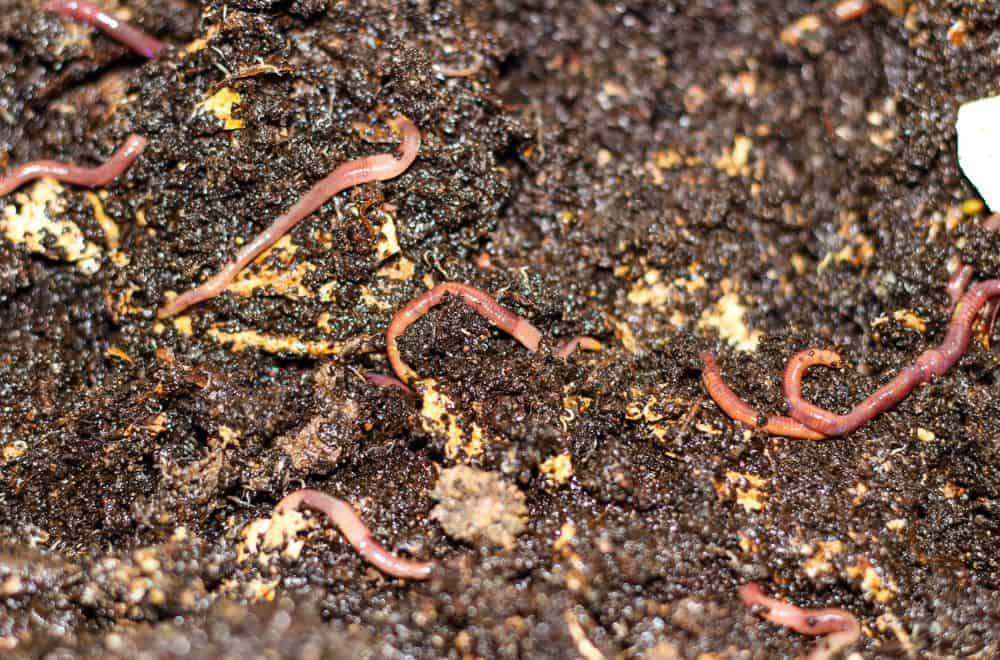
Usually, a simple flow through worm composter consists of a few identical trays with grates on the bottom, which allows worms to migrate vertically. You don’t need to set up all plates at once, but stack them over time.
In other words, you should add a new one after noticing that the previous tray is entirely full. In ideal circumstances, the bottom tray is without worms and ready to harvest by the moment you fill the top one. Let’s see how it works.
There are two basic types of flow-through systems. The well-known one is the one with the upward migration of worms. However, you can rely on the horizontal movement of worms as well.
Just use a highly effective standard wooden worm bin with two or more compartments, and a screen wall. Start adding materials on one side until the first part of the unit is full. After that, do it on the other side.
The system is straightforward. Your worms will start moving to the part with better food resources. Under ideal conditions, you can harvest mature vermicompost from the first compartment by the moment the second half is filled. You can continue the process again without downtime by starting filling the next part of your compost bin.
No matter which type of flow-through worm system you pick out, you will see that they operate according to the same principle. Your bin will have an open bottom with a horizontal grate system above the opening. It can be made from different materials, including wire as well as metal pipe or PVC tubing.
Put some sheets of cardboard or paper over them before adding the initial bedding. That way, you will prevent it from falling through the grate. Then add worms on the top. Over time, they will convert the bedding into the castings and compact them at the bottom of your unit.
To allow the process continues, you should add more food and bedding from the top to fulfill the space left after the compacted vermicompost settles at the bottom of the bin.
As soon as the cardboard (paper) you have used decomposes and your compost begins to dry out, you can start harvesting. The only thing you need to do is to remove the dry casting from the bottom of your bin and allow it to fall through the grate and collect it eventually.
The Primary Characteristics of Flow-Through Worm Bin
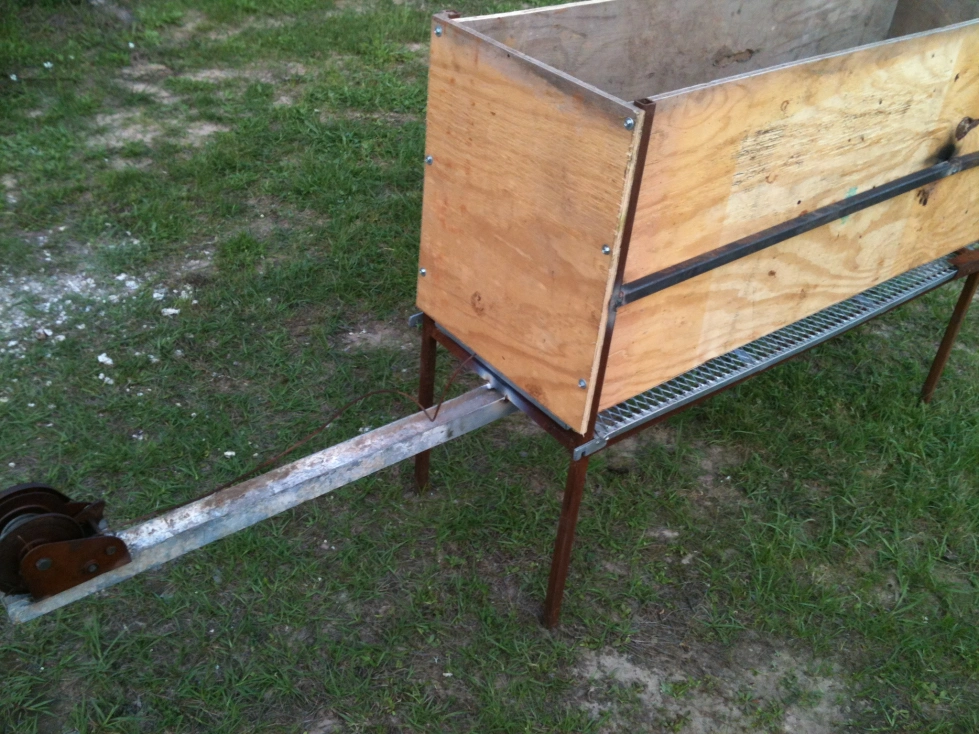
Image Credit: texasredworms
Before deciding to purchase a flow-through worm bin, try to consider some of its primary characteristics:
The height
An ideal flow-through worm bin should be 24 inches (61 cm) height from its top to the bottom. You should skip units shorter than 20 inches (51 cm), which is the strict minimum for this type of compost bins. It is crucial because:
- Compost worms live just below the surface layer of food. Respecting the required minimum height, you will harvest high-quality vermicompost without the worms and fungi.
- The food waste will have time to compost properly.
- The vermicompost will have enough time to mature adequately.
- Microorganisms with slow cycle (for example fungi) will have time to develop.
- If the bin is height enough, the compost will compact at the bottom without any fear of self-harvesting.
The false bottom
Unlike regular worm bins, the flow-through worm bin doesn’t have a closed bottom but bars or a grid. Also, it is placed at least 12 inches (30.5 cm) above the ground, which makes the harvesting much more comfortable. You just need to scratch the compost through these bars with a rake.
This false bottom also provides an additional air input at the bottom of your worm composter. Keep in mind that an extra input of oxygen will boost the number of worms and other beneficial aerobics. Also, the increased number of worms and microorganisms will make the process of composting more performing
The surface area
When you decide to compost your food waste more efficiently, you need more worms. However, you won’t get a desirable result by increasing the depth of the bin since compost worms are always near the surface. That means that you should increase the surface area. The ideal one is at least 24 x 24 inches (61×61 cm), but you can make a surface area of 40 x 24 inches (100×61 cm) as well.
Easy maintenance
Since this bin has only one compartment, you don’t need to deal with a large, heavy tray, which makes maintaining this unit much more straightforward than regular ones.
Don’t forget to add at least one liter of water at your flow-through worm bin once a week to keep its bottom moist. It is necessary because the constant contact with air dries the unit out very quickly.
Feeding the worms in a flow-through worm bin
Take care to avoid over-feeding your worms. Actually, it is one of the major issues new worm farmers deal with. Feeding the worms once a week will be enough. Experts recommend adding food over the surface area which is approximately 2 inches (5 cm) thick.
Easy harvest
When it is about flow-through worm bin, harvesting is a quite comfortable process, but you need to wait a pretty long time for it. First harvesting is possible after the container is full up to the top, and you should be prepared to wait 9 to 24 months for it. Once you harvest the first compost, you can collect 2 inches (5 cm) weekly if you feed the worms adequately.
Models of Flow-Through Bins
1. Small flow-through bin (the urban worm bag)
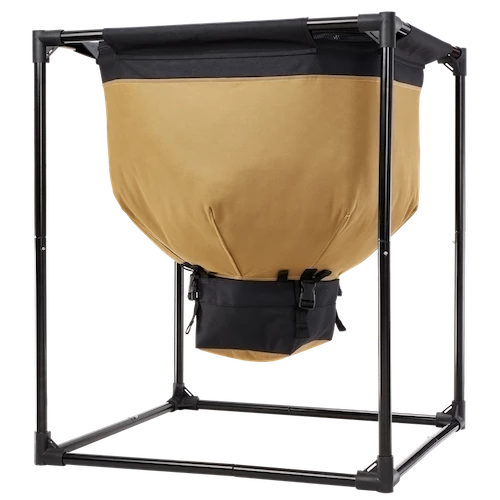
In my opinion, the urban worm bag is the most attractive flow-through bin for indoors you can find on the market. Plus, it is considered as the hottest worm composter in 2019. If you look for a worm system which works excellently without moving its content, you should pick out this particular model.
The process of its working is simple and implies placing food at the top and collecting compost from the bin’s bottom. A zipper underneath the bag keeps the compost from falling out.
Don’t forget to place a container under the unit to collect leachate that can possibly leak. It won’t happen often, but you should count on some dripping out when you use juicy fruits like melons.
The advantages of this model include:
- Pretty large capacity
- Frame made of sturdy steel
- Wide openings at the bottom with a convenient zipper
- Excellent ability of aeration and retention of moisture
- Lifetime guarantee
2. Medium flow-through bin (the worm wigwam)
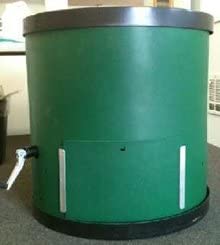
This system of worm wigwam is a valuable unit for you if you have a large garden, or you are a member of a community garden. Otherwise, it is a pretty big unit which probably goes beyond the needs of small producers.
This model houses up to 40,000 worms, and you can expect it to process approximately 40-60 pounds (18-27 kg) of worm castings every single week.
The advantages of this unit are:
- You can place it indoors or outdoors as well
- Three years warranty
- It is well-insulated and heated model
On the other hand, it is a bit pricey and costs around $500 to $800. However, it is worth that sum of money.
3. Large flow through bin (the flow-through reactor)
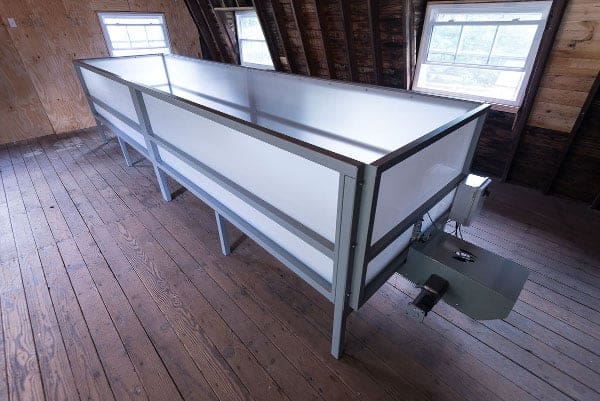
Image Credit: urbanwormcompany
Before considering purchasing the flow-through reactor, you need to know that this unit is quite expensive for home compost production even if you could build one by yourself. However, if you are creative and ingenious, it wouldn’t be impossible at all. The only question is whether you really need such a big and complicated compost bin.
The unit is basically a large, square or rectangular container with a metal grid system at the bottom, which keeps the worm castings in one place.
When you conclude that the worm castings are dry, you can quickly harvest them from a catch-all pan or a conveyor belt, depending on the model.
The advantages of this unit are:
- It is not too complicated for using
- It is highly productive and efficient
- The maintenance is uncomplicated
- This system is the most profitable type you can find on the market
Conclusion
No one can say that this system of composting is perfect, but you will get an excellent way to harvest your compost if you decide to use it. For me, the best advantage of flow-through vermicomposting is the possibility of the increased air-flow in your bin, which will allow collecting the high-quality finished material.
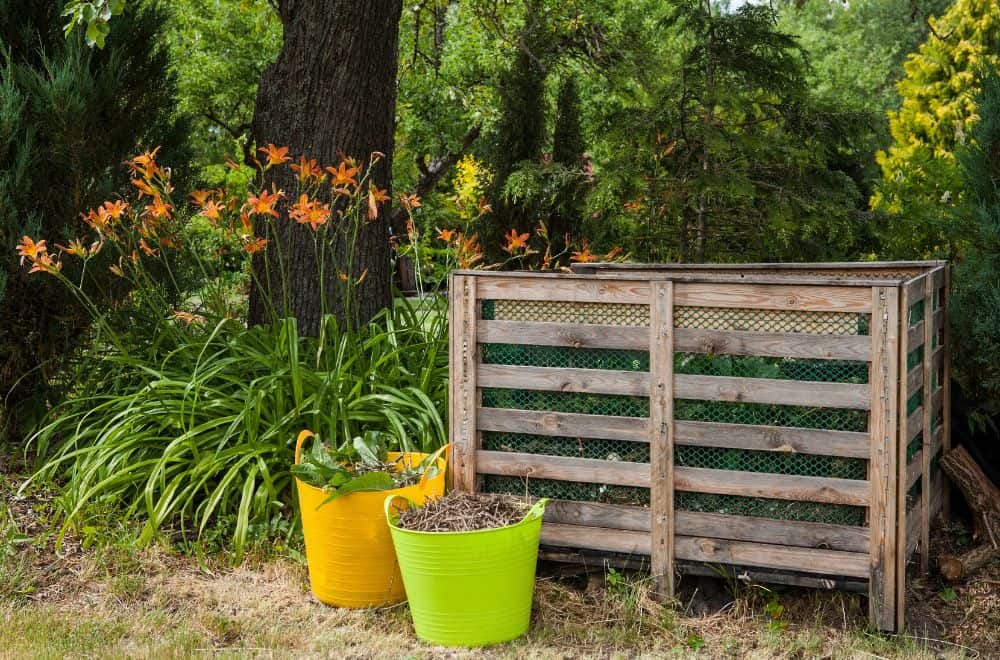
Leave a comment